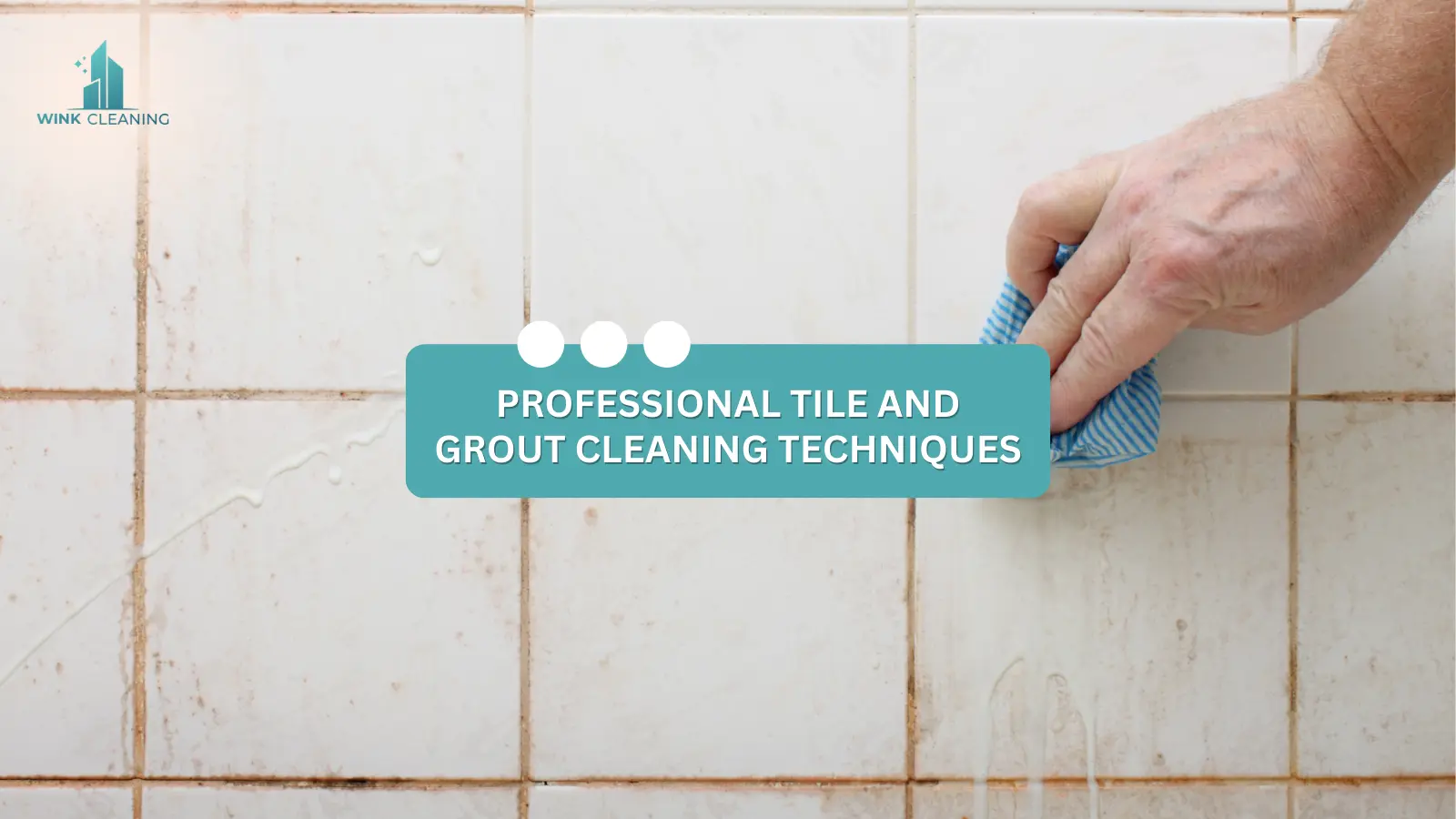Tiles are a popular choice for floors in every homes. They
make places like kitchens, bathrooms, and living rooms look nice. Tiles are
strong and easy to clean compared to other types of floors like concrete or
wood. But, because tiles are smooth, any dust, dirt, or spills show up easily.
This can make the floor look dull and not nice.
You might clean your tile floors regularly by sweeping and
mopping, but sometimes they need more complete cleaning to make them shine
again. Professionals know how to do this well.
If you're moving out of a place, it's important to leave it
clean. In cities like Melbourne, there are experts who can do this job for you.
They have special products and techniques to clean every part of the home,
including tiles and grout.
Tiles Cleaning Process
Keeping your kitchen and bathroom tiles clean is essential
to maintain a fresh and hygienic environment in your home. Over time, these
areas can accumulate dirt, food stains, greasy marks, and even mildew due to
the presence of water. To ensure your tiles remain pristine, follow these
comprehensive cleaning steps:
1. Dusting:
Before starting the cleaning process, start by removing
surface dust using a microfiber duster for wall tiles or a broom for floors. It
prevents dirt from spreading during the cleaning process.
2. Prepare a Cleaning
Solution:
In a bucket, mix together white vinegar (¼ cup), liquid dish
soap (1 tablespoon), baking soda (¼ cup), and hot water (2 gallons). Its
powerful mixture effectively breaks down dirt and grease, leaving your tiles
sparkling clean.
3. Stubborn Dirt:
Dip a mop into the prepared cleaning solution, ensuring it's
completely saturated. Wring out excess water and begin mopping the tiled
surface, applying extra pressure to lift stubborn dirt and grime. Work
systematically across the area, ensuring every tile receives attention.
4. Greasy Marks:
Greasy marks are a common nuisance, particularly in kitchen
areas. Act swiftly by blotting fresh oil splatters with a paper towel to absorb
excess grease. Next, add a few drops of dishwashing liquid to a gallon of warm
water. This solution effectively breaks down grease and removes stains.
5. Sponge Away
Stains:
Soak a sponge in the warm, soapy water solution and wring it
out to remove excess liquid. Place the sponge over the greasy mark and gently
rub the affected area. Rinse the sponge in the solution and repeat the process
until the stain disappears completely. For stubborn stains, allow the solution
to sit for a few minutes before scrubbing.
6. Final Rinse:
Once the stains have been successfully removed, rinse the
tiled surface with clean water to remove any residue from the cleaning
solution. Ensure all soap and dirt are completely washed away, leaving behind a
clean and gleaming finish.
You can effectively remove dirt, grease, and stains from
your tiles, restoring them to their original luster, by following these
detailed cleaning steps. Consistent maintenance will ensure your kitchen and
bathroom tiles remain beautiful and hygienic for years to come.
Grout Cleaning Process
When cleaning your home, it's easy to forget about the grout
lines between your tiles. Even after you've swept and mopped, grout can still
look dirty. That's because it holds onto dirt stubbornly. But with a little
extra effort and the right methods, you can get those grout lines looking clean
and fresh again.
If you're short on time or just want a really detailed
clean, consider hiring a professional cleaners. They know all the best tricks
and have the right tools to make your grout look like new. Companies (like Wink
Cleaning) that specialize in end-of-lease cleaning, especially in places like Melbourne,
can be a great help.
If you prefer to tackle the job yourself, try these expert
tips:
1. Baking Soda and
Vinegar Mix:
Start by making a paste with 3 parts baking soda and 1 part
water. Use an old toothbrush to spread this paste along the grout lines,
letting it sit for a while. While it's resting, mix some vinegar and water in a
spray bottle. When the paste has had time to work, spray the vinegar solution
on the grout and wait until it stops bubbling. Then scrub the grout with the
toothbrush and rinse the area with clean water. Just remember, if your tiles
are made of natural stone, skip the vinegar that it can harm them.
2. Hydrogen Peroxide,
Dish Soap, and Baking Soda Combo:
If you can't use vinegar or prefer not to, try this mix
instead. In a bowl, combine ¼ cup of hydrogen peroxide, 1 tablespoon of dish
soap, and ¾ cup of baking soda. Apply the paste onto the grout lines with an
old toothbrush and let it sit for a few minutes. After that, scrub the grout
well and rinse with a bit of water. Finally, dry the area with a clean cloth.
Key Takeaways for
Effective Tile and Grout Cleaning
Dealing with stubborn dirt on tiles and grout doesn't have
to be overwhelming. By following the correct methods and using suitable
products, you can achieve remarkable results without unnecessary stress.
Method Matters:
Utilizing the right cleaning techniques is crucial for
effectively removing dirt and grime from tiles and grout. Whether employing DIY
methods or seeking professional assistance, understanding the proper approach
ensures optimal outcomes.
Product Selection:
Choosing the appropriate cleaning products is equally
important. Choose for gentle yet effective solutions that are suitable for your
specific tile and grout materials. Avoid harsh chemicals that can damage
surfaces or cause adverse reactions.
Consistency:
Regular maintenance is key to preserving the cleanliness and
appearance of tiles and grout. Include cleaning into your routine to prevent
dirt buildup and prolong the lifespan of your surfaces.
Professional Cleaner:
For a detailed cleaning experience, consider hiring
experienced end-of-lease cleaners in Melbourne or professionals specializing in
tile and grout maintenance. Their expertise, combined with advanced tools and
techniques, ensures exceptional results and saves you time and effort.
Comprehensive
Cleaning:
Don't overlook the importance of addressing all areas,
including often neglected grout lines. By paying attention to these details,
you can achieve a truly pristine finish that enhances the overall appearance of
your home.
Maintenance Tips:
Implement preventive measures to minimize future dirt and grime accumulation. Consider applying sealants to grout lines to provide an additional layer of protection against stains and moisture.


